Sustained Success (BRONZE)
Client Credits: Newfoundland and Labrador Hydro
Diane Whelan, Manager, Corporate Affairs and Assistant Secretary, Newfoundland Power
Krista Langthorne, Manager Energy Conservation, Newfoundland Power
Stephanie Daley, Team Lead Marketing, Newfoundland Power
Heather Carter, Marketing Specialist, Newfoundland Power
Michelle Marley, Energy Conservation Program Specialist, Newfoundland Power
Jennie Wadden, Energy Conservation Program Specialist, Newfoundland Power
Elaine Cole, Energy Efficiency Advisor, Newfoundland and Labrador Hydro
Agency Credits: m5 marketing communications
Heather Dalton, Executive Vice-President
Darlene Keough, Senior Account Director
Jonathan Duke, Senior Director Integrated Planning
Rhonda Mercer, Media Director
Jane Harrington, Senior Media Strategist
Vicki Murphy, Creative Director
Mira Howards, Art Director
Danni Yetman, Copywriter
Courtney Elliott, Graphic Artist
WAVELIGHT PRODUCTIONS
Kelly Collins, General Manager
Scott McClellan, Cinematography
John Hong, Editor
Grant King, Sound Engineer
Section I — CASE PARAMETERS
| Business Results Period (Consecutive Months): | January 2015 – December 2016 (24 months) |
| Start of Advertising/Communication Effort: | September 2014 |
| Base Period as a Benchmark: | January 2011 – December 2014 |
| Geographic Area: | Newfoundland and Labrador |
| Budget for this effort: | $100,000 – $200,000 |
Section IA — CASE OVERVIEW
Why should this case win in the category (ies) you have entered?
Over the course of the two years of results, rebates for thermostats increased 103% over the baseline period. The media cost per unit rebated decreased 48% over the same period. Key research metrics increased during the period including brand awareness, program awareness, recall of advertising and reported consumer actions from exposure to adverting. At the beginning of the period a new campaign was launched and was sustained over the period. The campaign was developed with new insights and deployed with a heavier focus on digital advertising to drive results. Website traffic and digital ad metrics all improved over the period. The total media budget was stable over the base and results period.
Section II — THE CLIENT’s BUSINESS ISSUES/OPPORTUNITIES
a) Describe the Client’s business, competition and relevant history:
- takeCHARGE is a partnership of the two provincial electricity companies, Newfoundland Power and Newfoundland and Labrador Hydro.
- Under authority from the regulator, the Public Utilities Board, takeCHARGE has the mandate to promote electricity efficiency and conservation to all residents and businesses in the province.
- They currently offer a suite of residential and business rebate programs, along with information based campaigns and financing options. The rebate programs are similar to product lines for takeCHARGE with a program manager assigned, and sales and electricity saving targets for each year.
- The residential rebate programs are insulation, thermostats, instant rebates, appliance and electronics, heat recovery ventilators and home energy reports.
- Approximately 68% of homes in Newfoundland are electrically heated. Space heating accounts for about 55% of the electricity used in these electrically heated homes. Electric and programmable thermostats help consumers control and decrease their consumption and save money.
- As a brand, takeCHARGE has no direct competition other than inaction by consumers, along with general competition for share of wallet on home maintenance and renovation. The direct competition for the electronic and programmable thermostat program is the traditional dial thermostat.
- Retailers reported selling more manual dial thermostats (47%) than programmable (35%) or electronic ones (18%).
b) Describe the Client’s Business Issues/Opportunities to be addressed by the campaign:
- The thermostat program is an important part of takeCHARGE meeting its overall energy savings forecasts. These forecasts are completed in the form of a five-year plan.
- The energy savings goals are similar to sales goals for the organization, and it is very important to the partnering companies and the regulator that the goals are reached.
- Changing the thermostats in your home is a high involvement purchase. First consumers have to be convinced of the energy savings possible. Once there is consumer intent, they then need to select among the many options, purchase the perceived best option, and find an electrician to complete the work.
c) Resulting Business Objectives: Include how these will be measured:
- Increase the number of participants in the thermostat program resulting in an increase in units sold and energy savings;
- In support of these objectives increase awareness of takeCHARGE and specifically the thermostat program as measured by annual benchmark research.
Section III — YOUR STRATEGIC THINKING
a) What new learnings/insights did you uncover?
- Consumers are Confused: Energy efficiency can be complicated and confusing, with many choices. It can be hard for a consumer to evaluate the best way to save. When faced with a choice overload of options, consumers often do nothing. It can be difficult to get the consumer to even think about savings with their many life priorities.
- Consumers Underestimate Potential Savings: The public does not understand what activities in a home use the most electricity. They also underestimate the potential savings. Many people will turn off lights in unoccupied rooms, however this has a relatively small impact on their electricity use and bill. We needed to focus consumers on actions that would have larger impacts.
- Consumers Did Not Perceive a Problem: In many cases we were asking consumers to replace a piece of equipment, their thermostat, that in their mind worked perfectly fine. From a theory of change perspective, people respond to a current loss, more than a potential future gain. We needed to identify this current loss to the consumer and explain that everyday of inaction is another day of loss.
- If Consumers Can’t See It, It’s Not Real: Energy loss is invisible. So we needed a creative device to visually represent the loss together with the rational case for change.
b) What was your Big Idea?
We vilified the dial thermostat as a thief in your home, stealing your energy and money. Ditch that dial! Stop wasting energy to heat your home when you’re away or asleep. With a programmable thermostat you don’t need to remember to dial back. Set it and forget it.
c) How did your Communication strategy evolve?
- In fall 2014 the campaign launched as an integrated effort across television, social media, radio and digital advertising. Video and written content was developed to help the consumer understand the current loss and potential savings, and to overcome the two key barriers of installation and programming.
- In 2015 takeCHARGE launched a new, content rich website to better steward leads through the decision making process and enable conversion tracking for advertising optimization.
- In 2016 the media team applied campaign learnings and new targeting approaches to maintain strong reach while improving click through rates and cost per conversion.
d) How did you anticipate the communication would achieve the Business Objectives?
- The province has 77% home ownership, the highest in Canada. The price point of programmable thermostats make them attainable for most income levels, especially after the takeCHARGE rebate. The target audience was broad, with all electrically heated homes able to take advantage of the rebate. A third party market potential study determined that approximately half of all thermostats in the province being sold were dial thermostats, meaning there was sufficient market potential to meet our business objectives, if only we could raise this unrealized need among consumers.
- From customer feedback we understood the barriers and developed the insights in section (a) to overcome those barriers.
- We understood this was a complex decision for the consumer and a variety of messages would be required after initial awareness was created. We used retargeting and a stepped messaging matrix to push leads towards the purchase, installation and finally submission of the rebate.
Section IV — THE WORK
a) How, where and when did you execute it?
The fourth quarter is the key period for takeCHARGE and especially for the thermostat program. The media plan detailed in (b) included television, digital display, social media, and content deployed in nine weeks of activity flighted throughout Q4 and a further six weeks of activity in Q1 the following year. This cycle repeats with slight adjustments for 2015 and 2016. Search engine marketing ran full year. See attached for video, radio and digital examples.
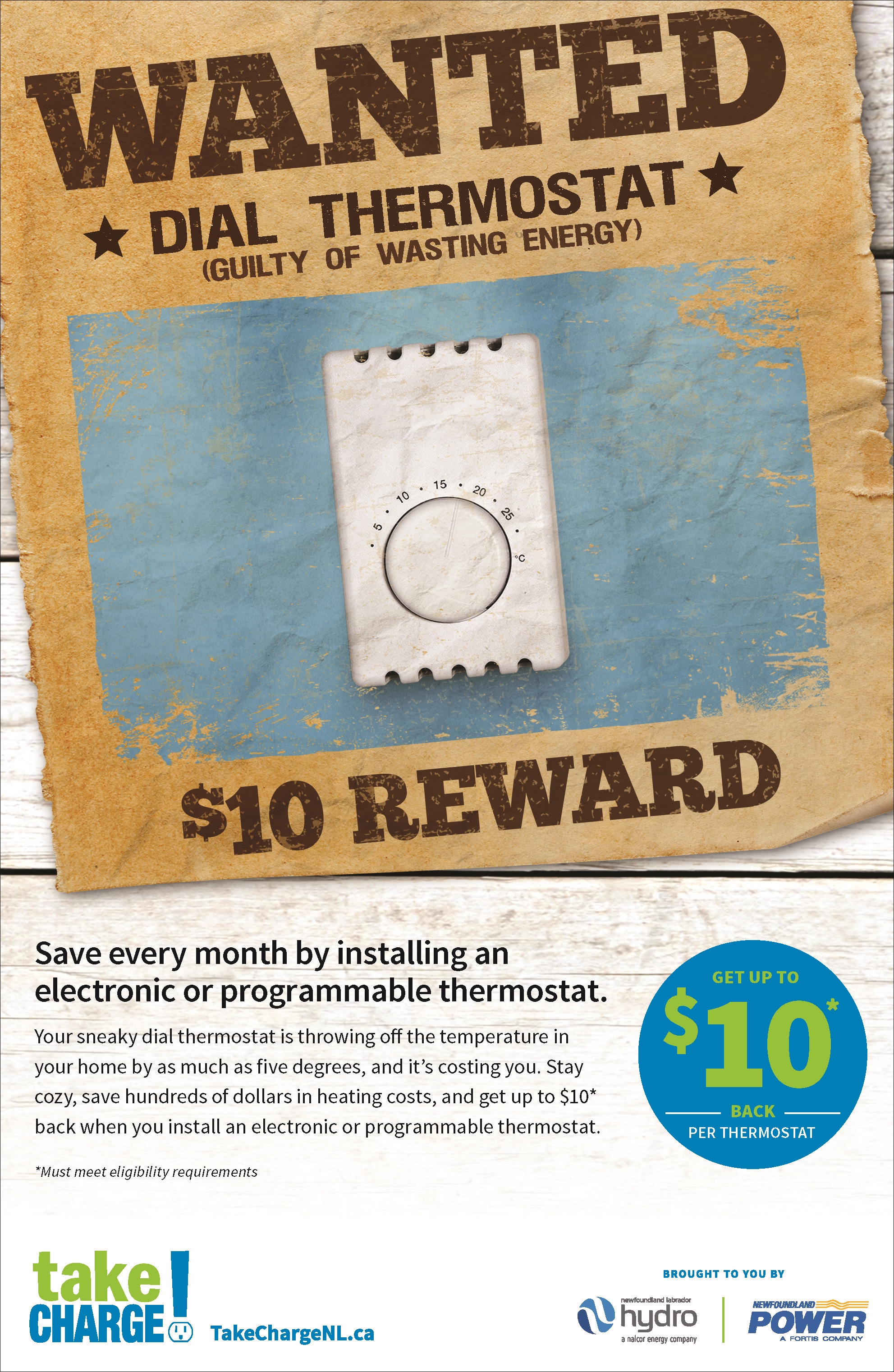
c) Media Plan Summary
The campaign was mass media in nature. With nearly 80% home ownership, the majority of the adult population was in the target audience. The campaign was executed through a spring and fall flight each year with full year continuity through social media and SEM. The charts below show the change in the media allocations from 2014 to 2016 as budget shifted towards digital executions. The primary creative was a 0:30 TV spot run on TV and online. This was complemented by awareness level display advertising, programmatic ad targeting, and remarketing with more specific messages. The website was further developed to provide resources to guide the user through consideration, evaluation, and conversion.
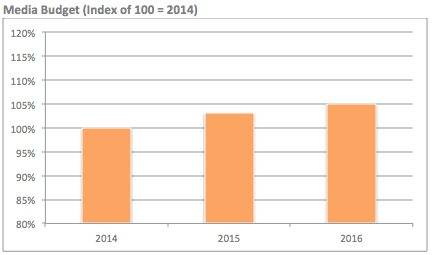
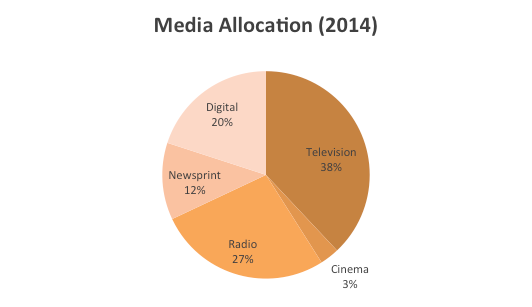
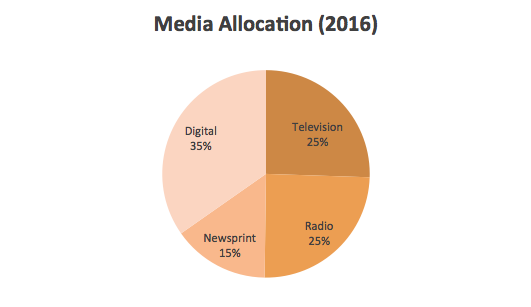
Section V — THE RESULTS
a) How did the work impact attitudes and behaviour?
All data below is from a third party quantitative research study conducted by MQO Research with a sample size of 600 and 95% confidence interval.
1. Aided awareness of the takeCHARGE brand increased over the base period of 2013 from 64% to 82% in 2016.
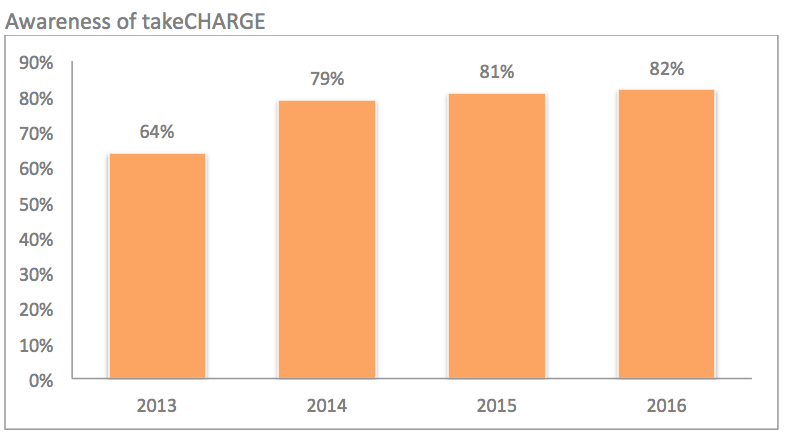
2. Awareness of the thermostat program increased over the base period of 2013 from 39% to 56% in 2016.
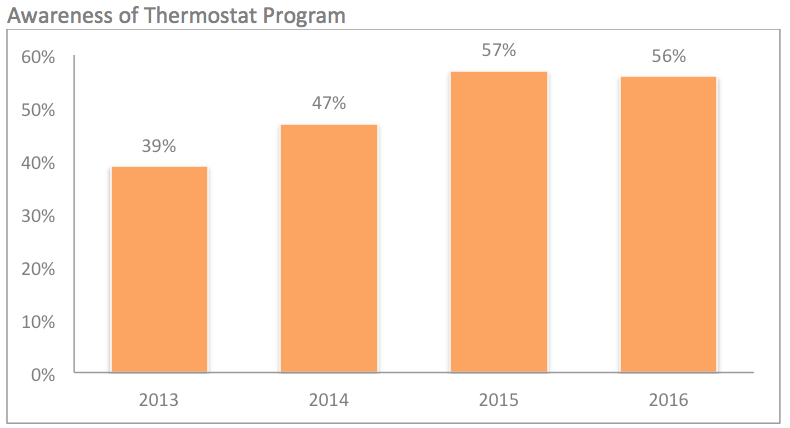
3. Recall of all takeCHARGE advertising increased over the base period of 2013 from 49% to 59% in 2016.
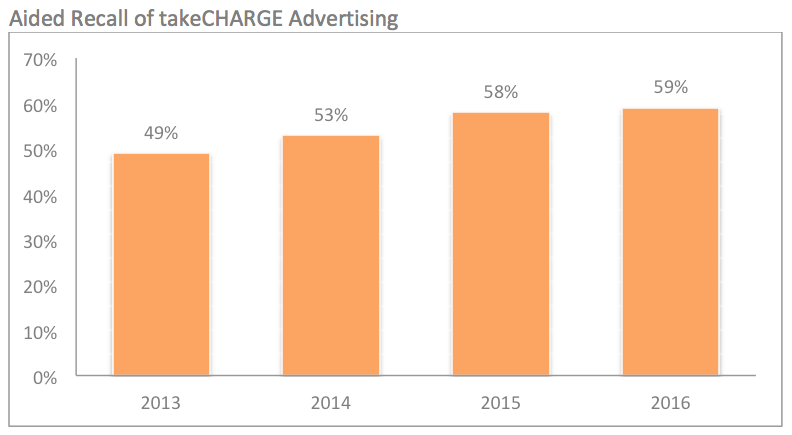
4. Self reporting of consumer behaviour being impacted by all takeCHARGE advertising increased over the base period of 2013 from 19% to 45%.
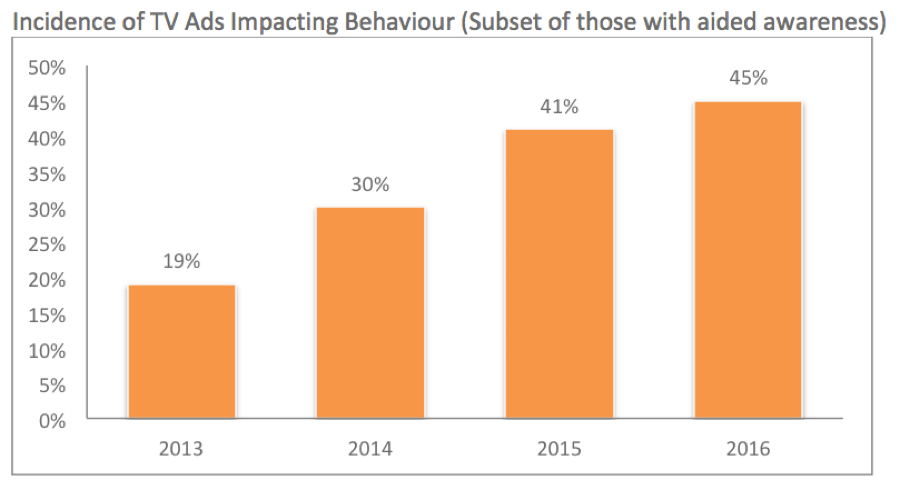
b) What Business Results did the work achieve for the client?
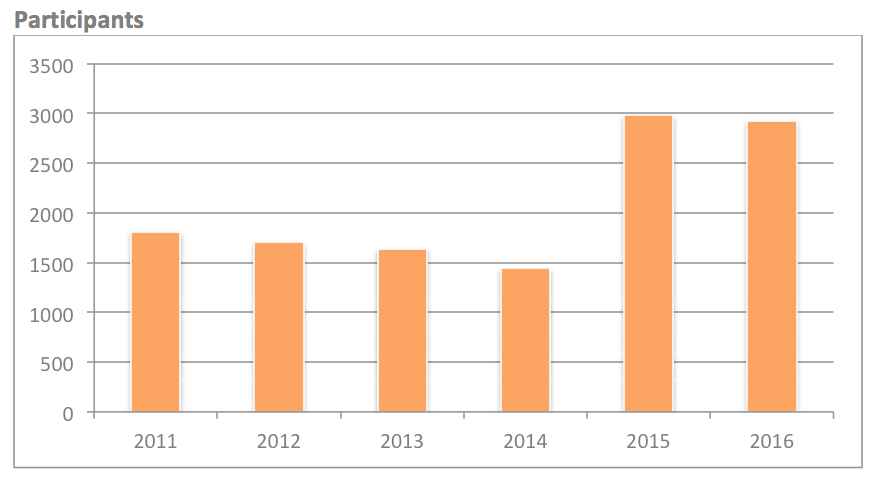
Participants increased from 1,442 in 2014 to 2,924 in 2016, a percentage increase of 103%.
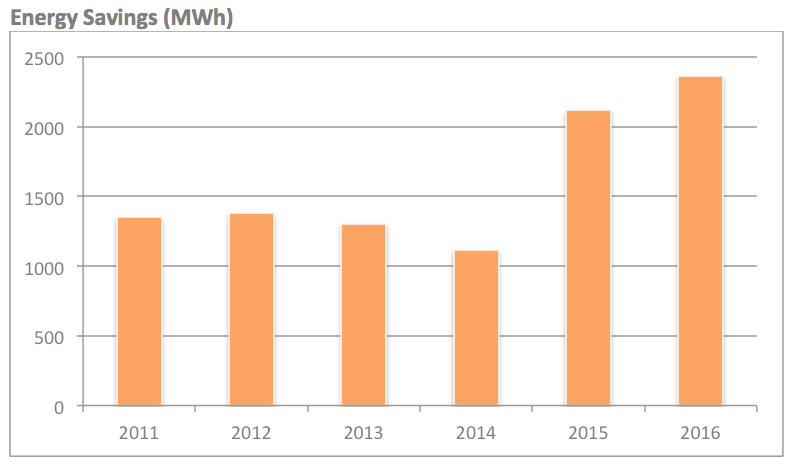
Energy Savings increased from 1,117 MWh in 2014 to 2,364 in 2016, a percentage increase of 112%.
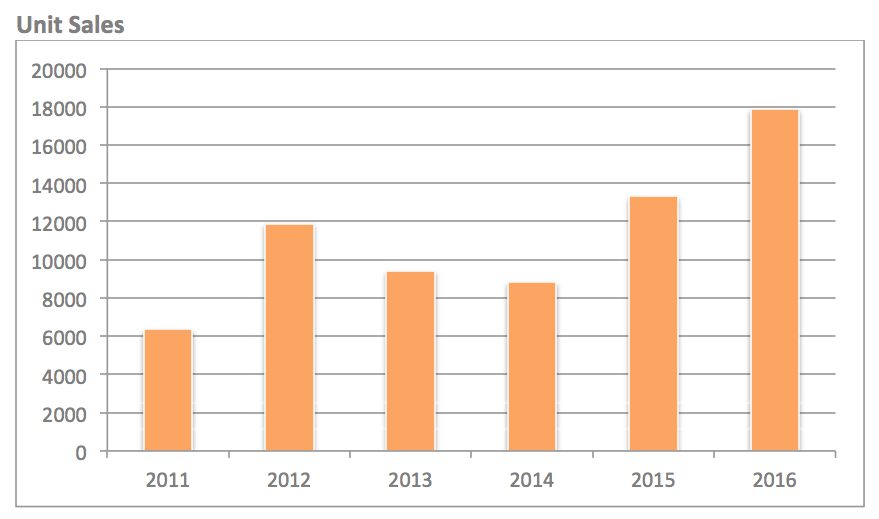
Unit sales increased from 8,809 in 2014 to 17,858 in 2016, a percentage increase of 103%.
c) Other Pertinent Results
Website: In fall 2014 and throughout 2015 we used high funnel tactics to drive a large volume of traffic. In 2016 we applied campaign learnings and introduced new digital tactics, resulting in a drop in traffic volume YOY, but still an increase over 2014.

Annual users increased 160% from 2013 to 2016. Sessions increased 216%. Page views increased 151%.

Sessions increased 188% from 2013 to 2016. Time on site increased from 1:50 minutes to 2:24 minutes.
Digital Ads (Display, SEM, Social Media): The budget for digital advertising was increased over the results period by reallocating funds from traditional media. The following charts show the resulting increase in impressions and clicks, maintaining an above industry average click thru rate of 0.20-0.35% and decreasing the cost per click each year.
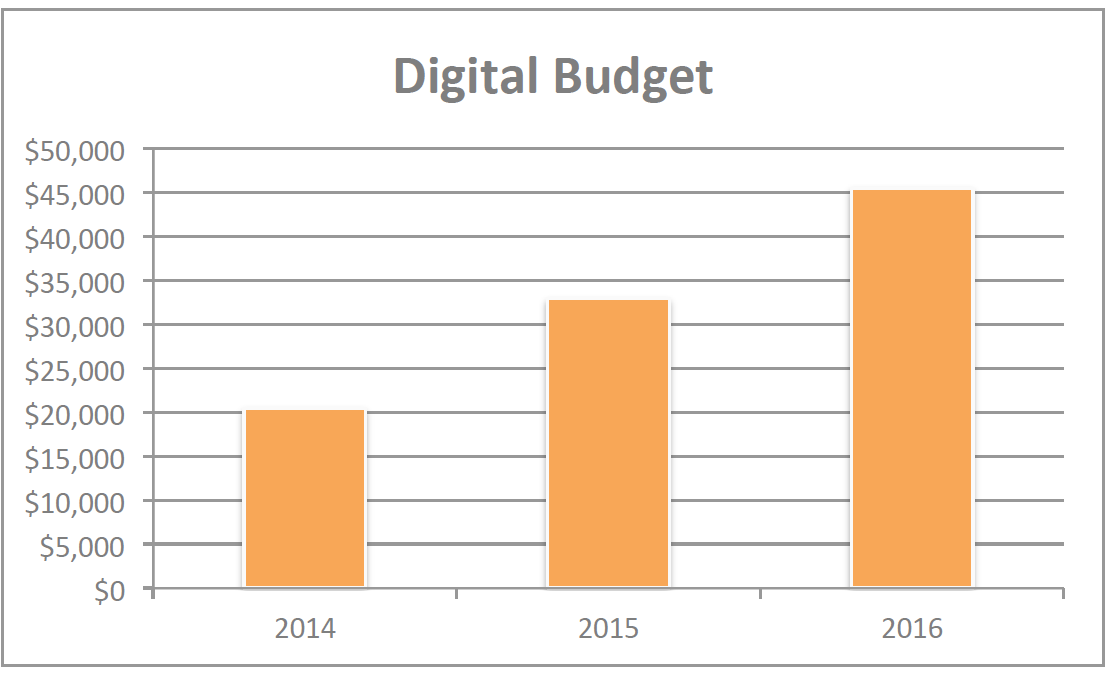
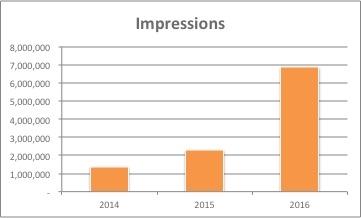
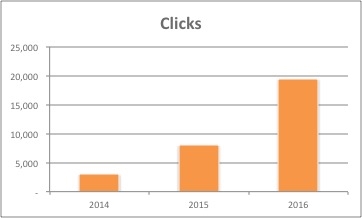
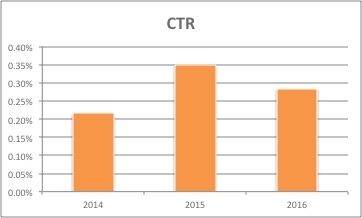
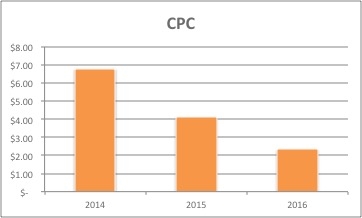
d) What was the campaign’s Return on Investment?
The media cost per unit sale decreased 48% from $18.28 in 2014 to $9.46 in 2016.
Media Cost per Unit Sale
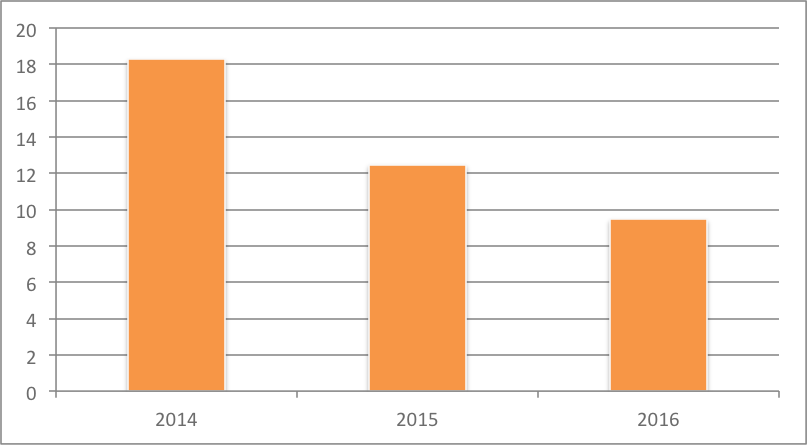
Section VI — Proof of Campaign Effectiveness
a) Illustrate the direct cause and effect between the campaign and the results
- New campaign creative and media approach coincided with the timing of the increase.
- The increase was sustained over a two year period with substantially different results than the base period.
- Ad campaign metrics and market research indicate the campaign was a factor in raising awareness of the product, changing attitudes and behaviours and motivating consumers to action.
b) Prove the results were not driven by other factors
Campaign spend vs. history and competition:
Campaign spend was stable throughout the two year results period and baseline period. Media spend increased 5% over the total period.
Pre-existing Brand momentum:
There are no indicators of brand momentum prior to the business results period.
Pricing:
The rebate amount of $10 was the same throughout the baseline and business results period.
Changes in Distribution/Availability:
Throughout the baseline and business results period, takeCHARGE worked with retail partners to ensure POP was in place and to hold in-store events around any periods where there were discounts. The end price point of thermostats was consistent between 2011 and 2016.
Unusual Promotional Activity:
No unusual activity.
Any other factors:
In general consumers are beginning to become more tuned in to the topic of energy efficiency as a result of many factors, including the forecasted increase in electricity rates in the province.